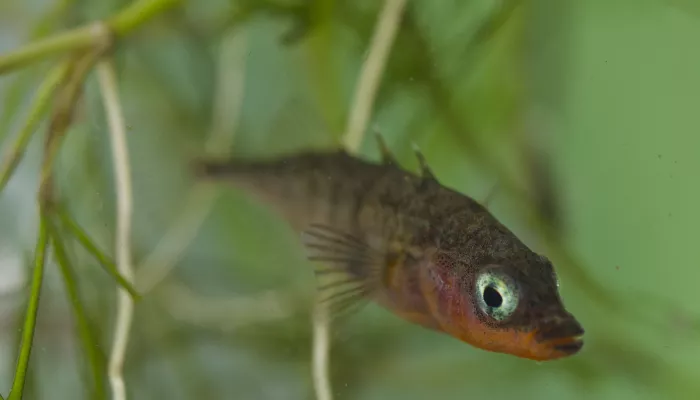| Statistics | |
|---|---|
| Length: | 4cm - 7cm |
| Weight: | 1g |
| Average Lifespan: | 3-5 years |
A diminutive but aggressive predator, the three-spined stickleback hunts tadpoles and small fish. It is also known for fiercely protecting its nest of eggs until they hatch. Look for it in ponds, lakes and rivers.
About
The three-spined stickleback is a small fish found in ponds, lakes, ditches and rivers. It is an aggressive predator, feeding on invertebrates and other small animals, including tadpoles and smaller fish. In the spring, the male develops a bright red throat and belly and performs a courtship dance to attract a mate. He builds a sheltered nest out of vegetation, under which the female will lay up to 400 eggs. The male then defends the nest from other fish until the young hatch up to four weeks later. The three-spined stickleback is the fish that is most likely to be caught when pond-dipping.
How to identify
The three-spined stickleback has a brownish back and silvery sides and belly. In spring, males develop a red throat and belly, and bright green flanks. Living up to its name, it can be identified by the three sharp spines on its back.
Did you know?
Marine three-spined sticklebacks migrate out to sea in the winter, returning to freshwater rivers in the spring to spawn. Freshwater three-spined sticklebacks tend to be more sedentary, staying in the same place for their whole lives.
How people can help
The Wildlife Trusts work with planners, water companies, landowners, statutory bodies and anglers to help make our waterways and waterbodies as good for wildlife as they are for people. By working together, we can create Living Landscapes: networks of habitats stretching across town and country that allow wildlife to move about freely and people to enjoy the benefits of nature. Support this greener vision for the future by joining your local Wildlife Trust.

